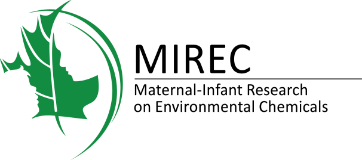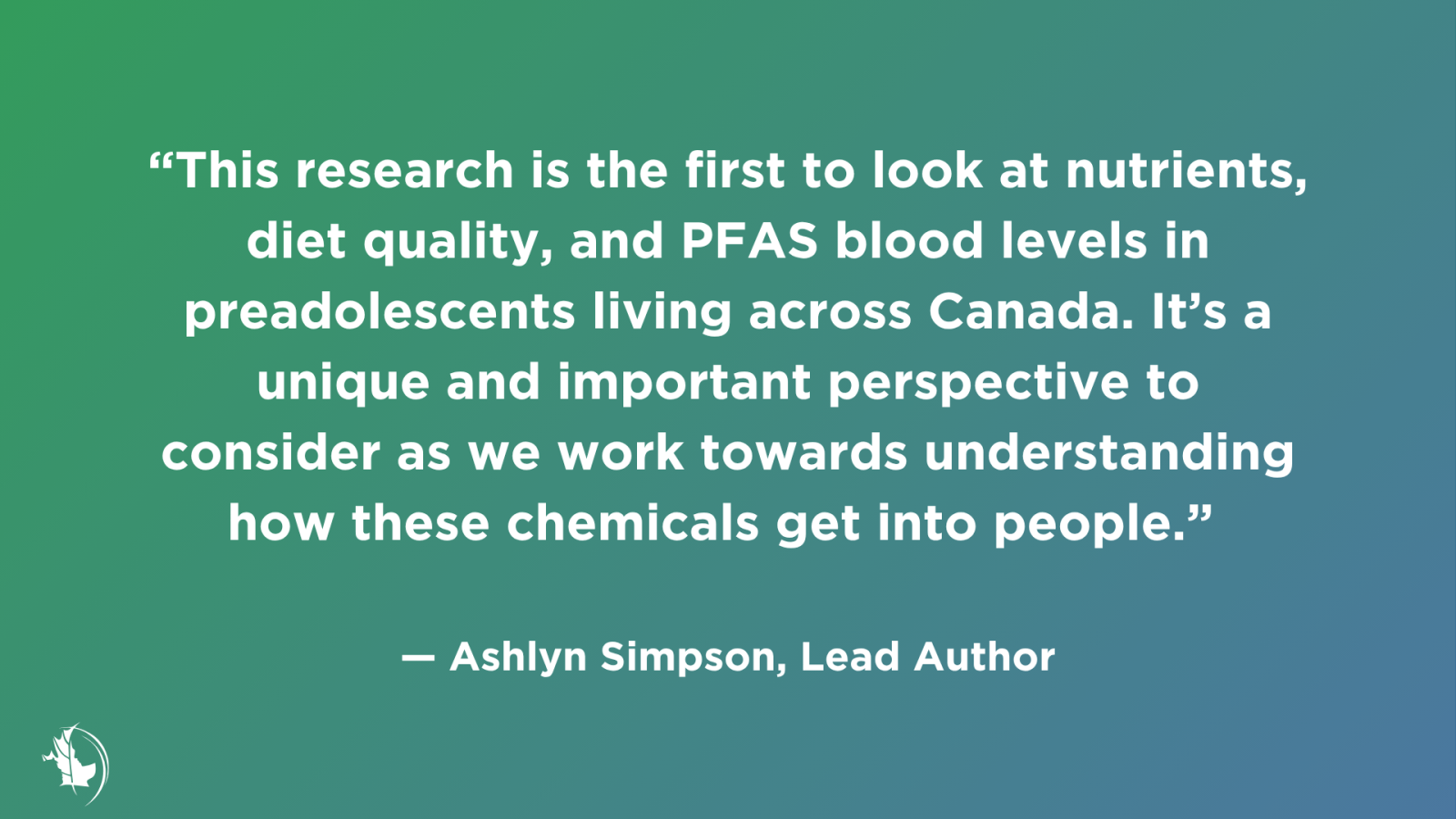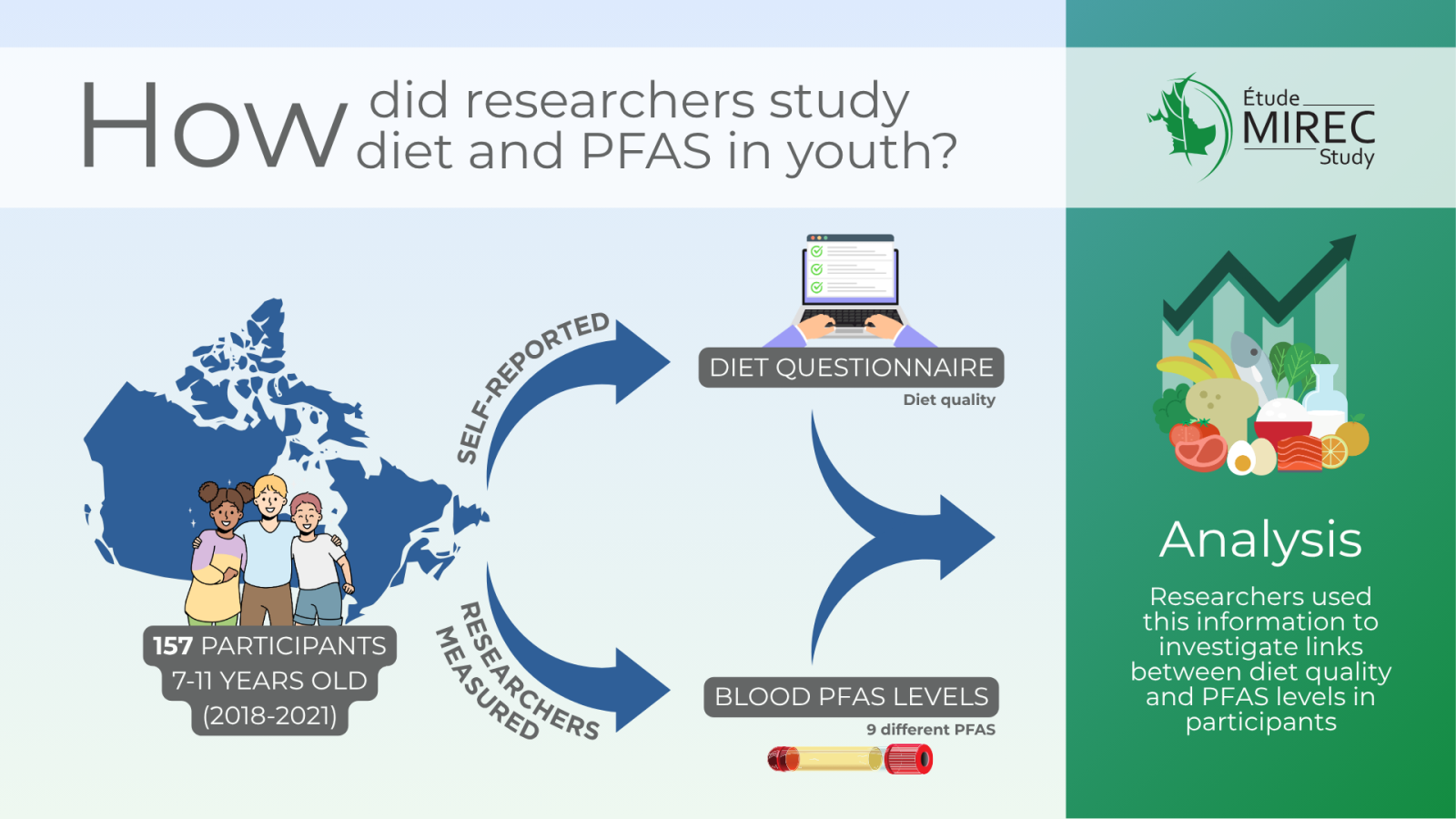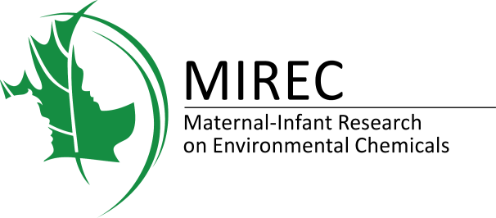Publication: Diet quality in relation to serum perfluoroalkyl substance concentrations in Canadian preadolescents. Simpson A, Fisher M, Harrison S, Morisset A-S, Borghese, MM, Braun JM, Bouchard MF, Saha T, Panagiotopoulos C, Booij L, Morrison K, Ashley-Martin J. Environmental Research 2025 Aug 15; 279: 121790. doi: 10.1016/j.envres.2025.121790.
Researchers using MIREC-ENDO data found links between diet and levels of PFAS (per- and polyfluoroalkyl substances), or “forever chemicals”, in youth participants aged 7 to 11. Perhaps most surprising, “healthier diets” that are rich in fruits and vegetables were linked to higher levels of certain PFAS in MIREC youth.
If you read our article on personal care product use, you may already be familiar with PFAS. These long-lasting chemicals are used to manufacture various consumer products and can end up in drinking water and food. Youth may be particularly vulnerable to the potential hormone-disrupting effects of PFAS as they go through puberty.
All of the youth had measurable levels of some PFAS in their blood. MIREC researchers linked higher consumption of fats, fruits and vegetables, fiber and iron to higher levels of some PFAS in the participants. However, higher vitamin D intake as well as the percentage of calories from protein were associated with some lower PFAS levels.
These findings could be explained by two main possibilities. First, certain foods may be "picking up" PFAS along the path from farm-to-table. Another intriguing possibility is that certain foods may affect how the human body handles ingested PFAS.
Future investigations, which examine the farm-to-table journeys of foods and their PFAS levels, are needed to further our understanding of the connection between diet and PFAS.








